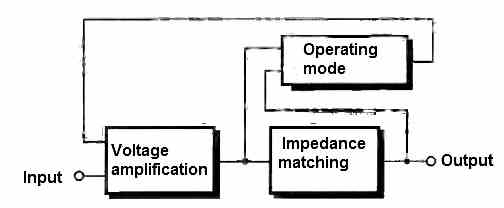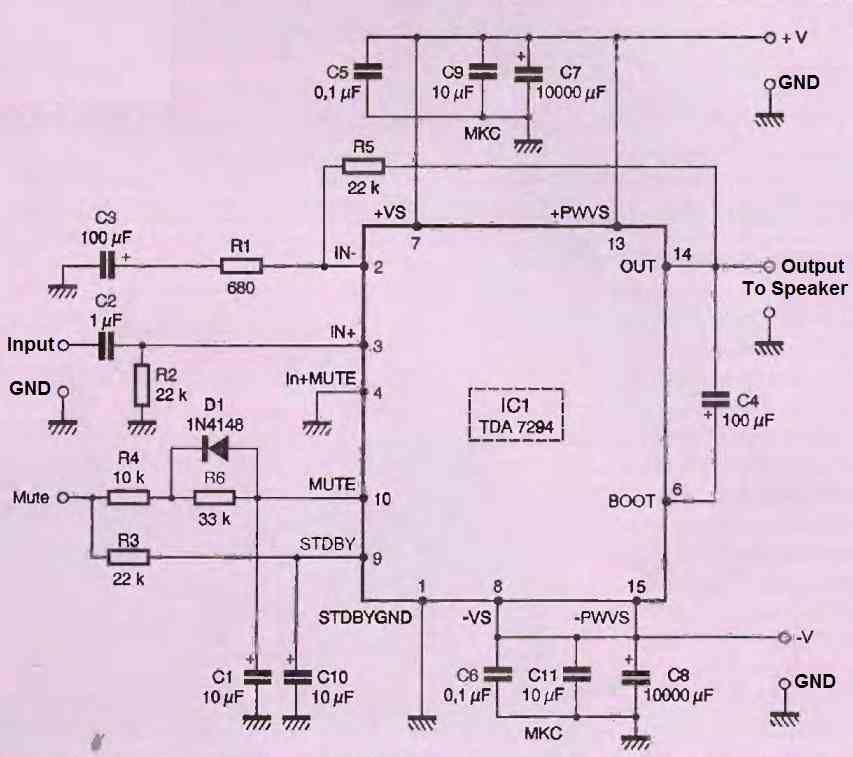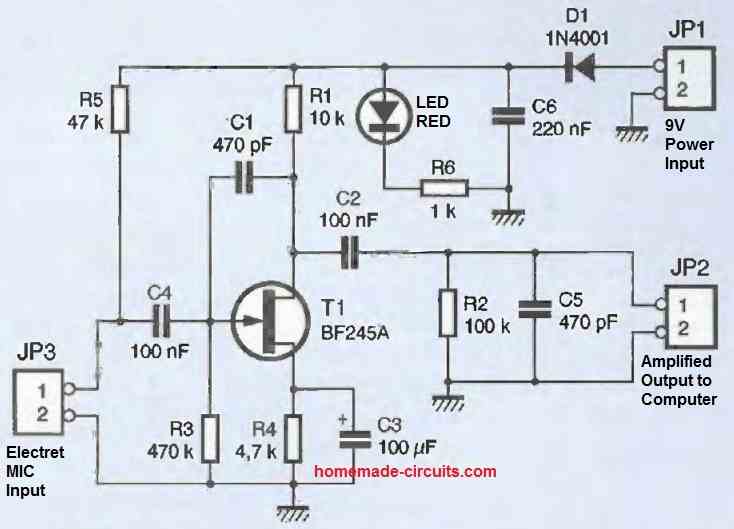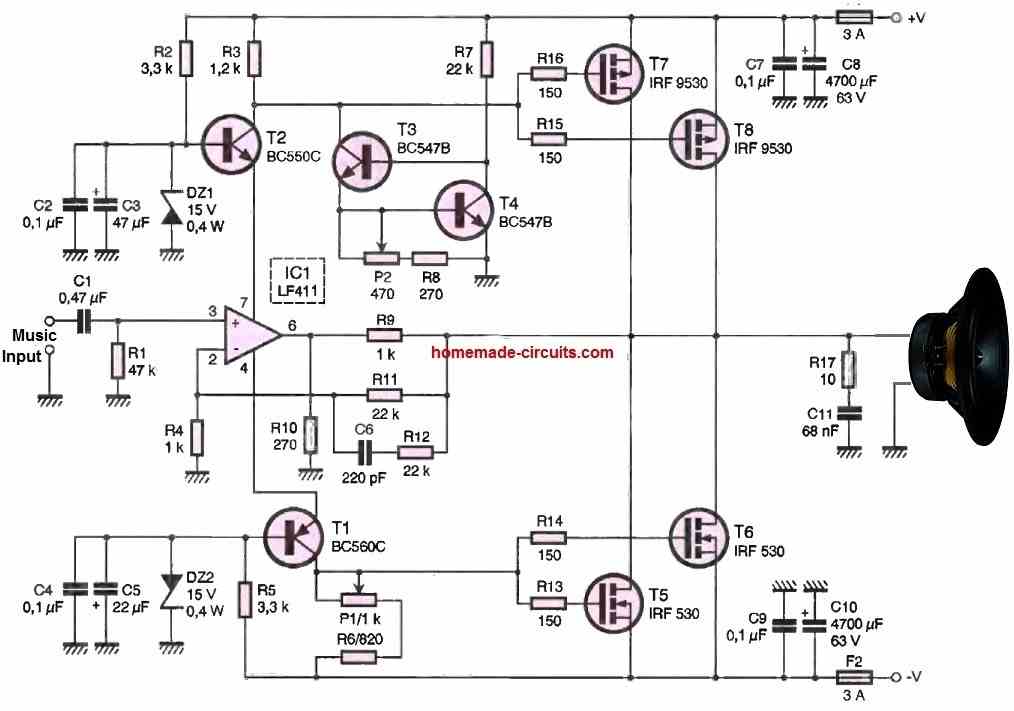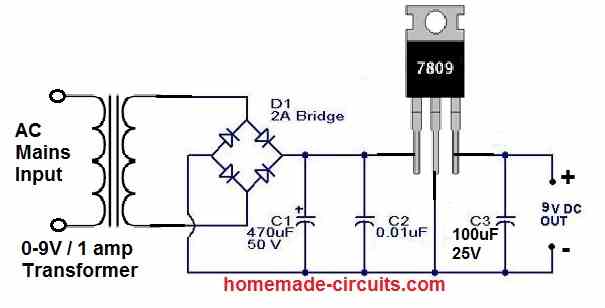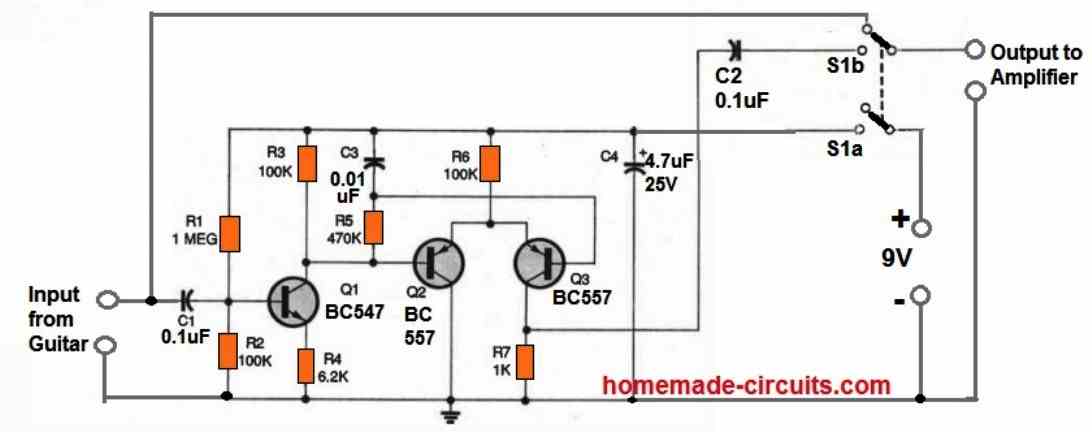With a simple design, this 10 watt stereo amplifier circuit offers good dynamics and excellent bass reproduction. Although its power output is modest, at 2 x 10W RMS, it allows for comfortable use in small-sized rooms, such as apartments. When paired with speakers with a minimum power rating of 20W, it will provide complete satisfaction. […]
Audio and Amplifier Projects
100 Watt Power Amplifier Circuit Diagram using a Single IC TDA7294
Building a power hi-fi amplifier with MOS transistors requires the implementation of a relatively large number of components because, at the level of power stages, the connection between the bipolar transistors that make up the input stages and the MOS transistors of the output stages is far from simple. Fortunately, there is an elegant solution […]
Using Electret Microphone on Computer PC
The small circuit that we propose here provides a 20 dB gain to the microphone signal, which will finally allow you to effectively use an electret microphone on your PC. Circuit Description The diagram of our circuit is reproduced in the Figure below. Don’t expect a complicated diagram with op-amps everywhere, as our circuit is […]
75 Watt Power Amplifier Circuit
Our power amplifier only uses a handful of widely available and inexpensive components. Despite this, it can deliver an effective power output of 50 W into an 8 ohm load or 75 W into a 4 ohm load. If distortion is below 0.3% at these maximum power levels, it drops to less than 0.01% from […]
Train Sound Simulator Circuit
The train sound simulator circuit is an electronic circuit that generates a realistic sound that mimics the sound of a train moving on tracks. The circuit is designed to be integrated into a model train set or layout to add to the overall realism of the scene. The sound is produced using a combination of […]
Guitar Distortion Generator Preamplifier Circuit
Distortion and overdrive are types of audio signal enhancement that are employed to change the tone of amplified electric musical instruments like guitars. Typically, this is accomplished by increasing the gain of the instrument, which results in a “fuzzy,” “snarling,” or “grinding” tone. Depending on the type and degree of distortion used, the effects change […]
